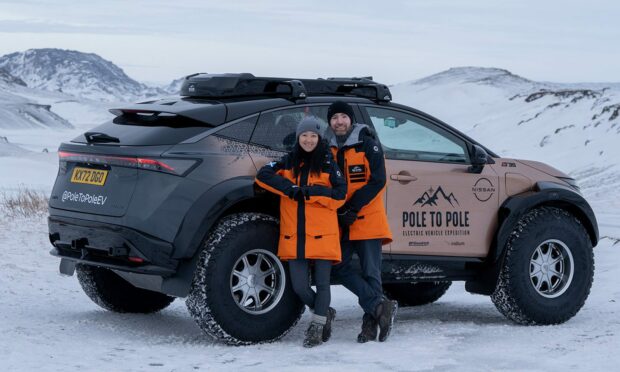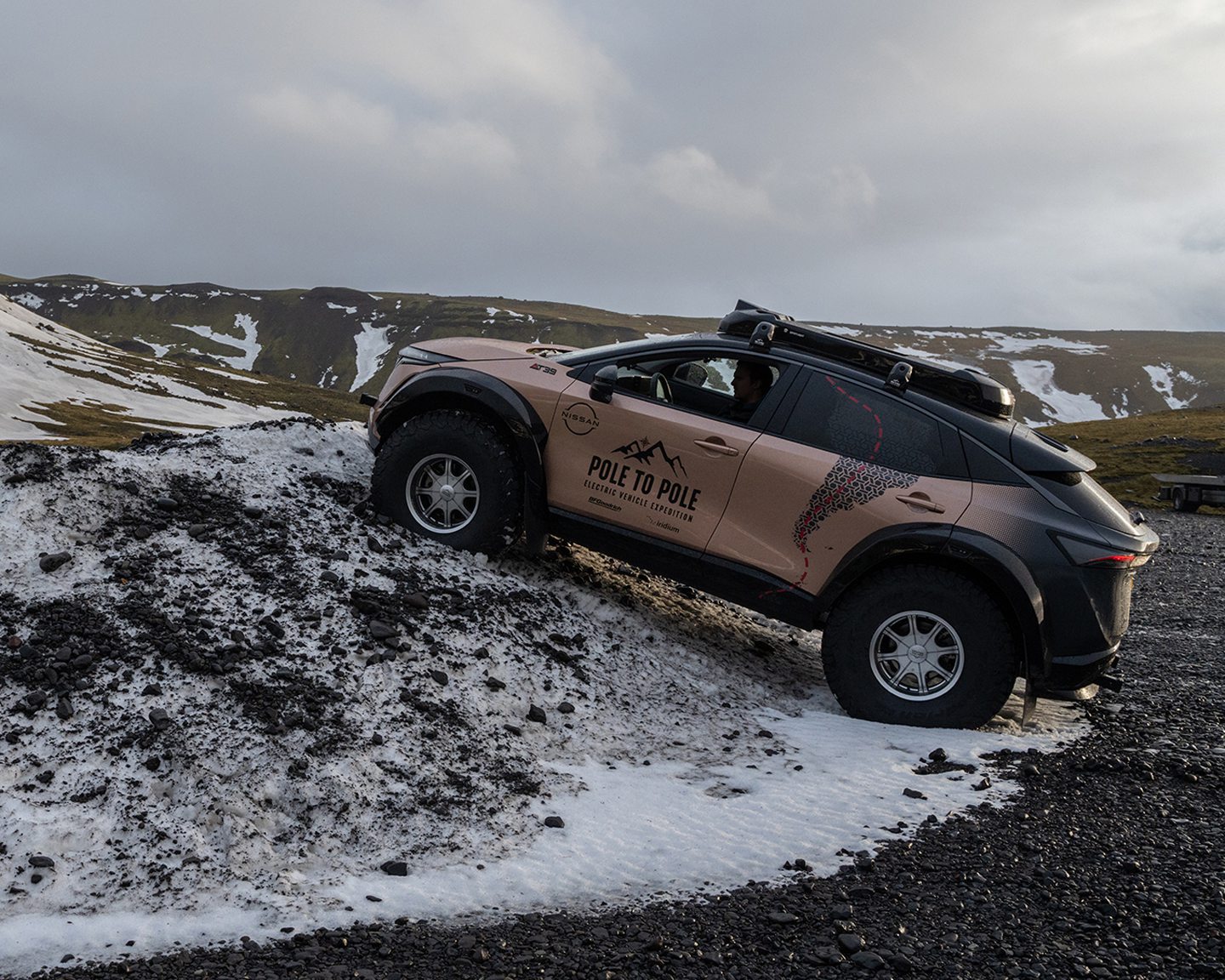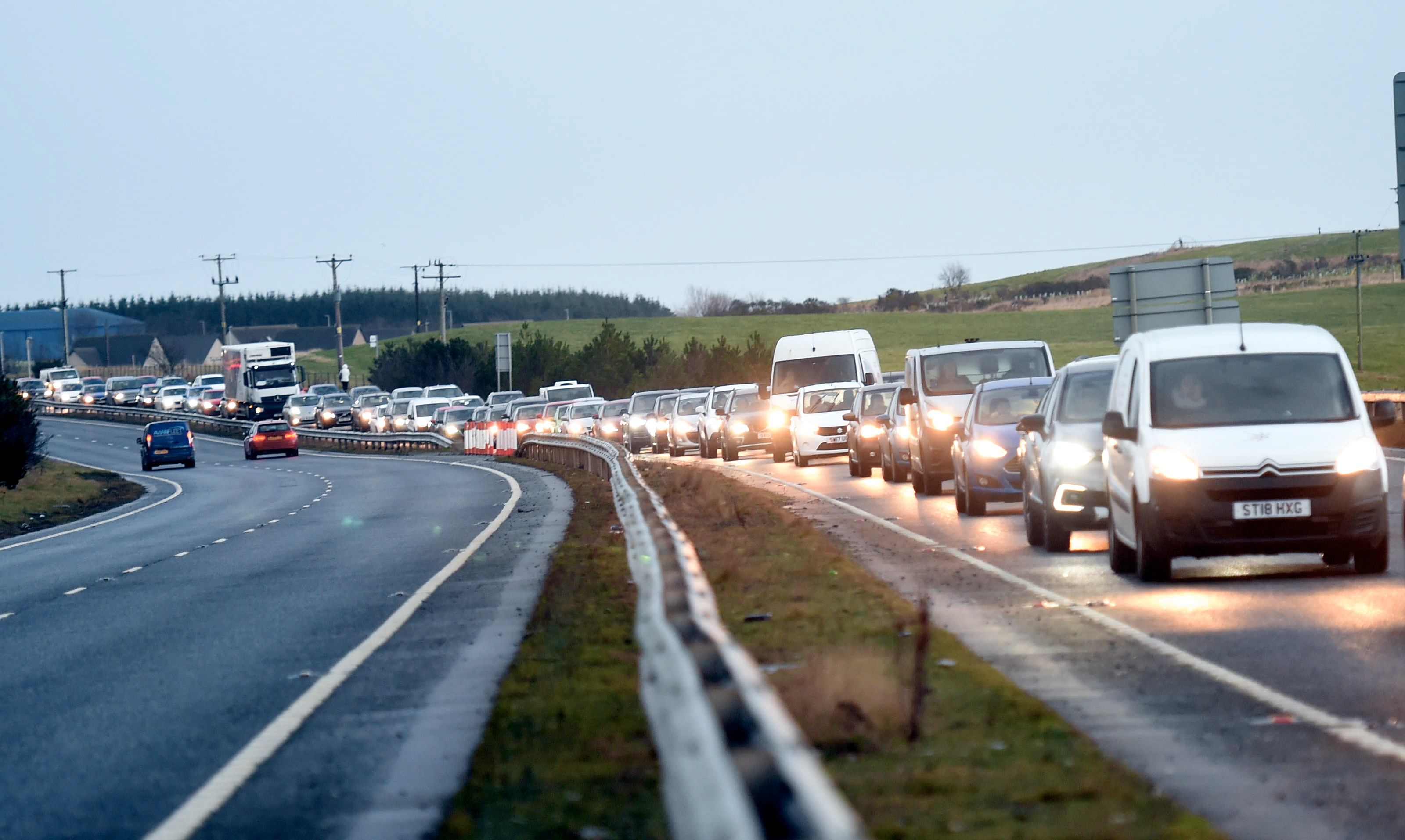Chris and Julie Ramsey from the Bridge of Don are preparing for an adventure across the planet — and they’re taking a pack of rowies with them.
The Aberdeen couple are in the final stages of preparations for a first-of-its-kind expedition driving an all-electric car from the magnetic north pole all the way to the south pole.
Over the course of their 17,000-mile, 10-month journey, they will travel through 14 countries, and deal with conditions ranging from icy Arctic winds of -30C, to blistering tropical temperatures of +30C.
Ahead of their departure next month, we caught up with Chris to find out more about their quest, why they’re doing it, and how he intends to take a pack of rowies from home all the way to the north pole to “educate” Canadians about Aberdeen cuisine.
How can you charge an electric car at the north pole, if it’s hard enough to find a charger in Aberdeenshire?
Chris and Julie have been planning their trip for the past four years.
Sponsored by Nissan, they will be taking their electric car across the planet – through north, central, and south America.
The Nissan Ariya they will be driving has been extensively modified and equipped for the extreme conditions they’ll be contending with by the company Arctic Trucks, which previously worked on a north pole challenge for Top Gear.
But unlike the BBC show, Chris and Julie’s car will be completely powered by electricity.
If you’ve been doing any reading on electric vehicles recently, you’ll know how much of a pain it can be to find somewhere to charge your car, even in rural Scotland.
So how on earth will Chris and Julie fill their batteries at the magnetic north, surrounded by sea ice and hundreds of miles away from civilisation?
“In the polar regions, we are currently just finishing off our portable charging device, which is a wind turbine supported by solar,” explained Chris.
“We will tow that with us through both the Arctic and Antarctica, and use it to harvest the natural resources.”
While they’re travelling through the Arctic south from magnetic north, Julie and Chris will be covering around 100km a day (62 miles), and spending about 16 hours a day “putting energy back into the battery”.
Chris added: “We say 100km a day, but we still don’t know what the impact of -30C conditions will have on the battery and range of the car.
“So it could be more than 100, it could be less, it’s very much going to be learning as we go.”
So why on earth are Chris and Julie trying this in an electric car?
“It’s a voyage of discovery for us,” said Chris, “to learn about what’s going on in the world, and show there’s hope out there, and that there’s people doing incredible things to help tackle the climate crisis.”
He explained the expedition has been designed to help raise international awareness of the climate crisis, and the power and potential role of electric vehicles and other sustainable technology in addressing it.
Over the course of their journey, the Aberdeen couple will be visiting individuals and organisations throughout the Americas working on inspirational climate-friendly projects.
They will also be meeting with people like the tribes of the Ecuadorian Amazon, to share their stories of protecting their ancestral home in a changing world.
Chris added: “There’s so much talk out there about doom and gloom.
“But we want to show people there are solutions, from simple, everyday actions right up to major solutions like the transition of the energy grid.”
From charging every 60 miles down the A90, to conquering continents in an electric car
Chris and Julie, who both have backgrounds working in the oil and gas industry, have been long-term adopters of electric vehicle (EV) technology.
But a lot has changed since Chris bought his electric Nissan Leaf in Aberdeen in 2014.
Back then he would regularly take it south from Aberdeen for events – and it was far from an electric dream.
“I’d have to keep the heating off and wear a big jacket, gloves, hat, and still be charging up every 60 miles,” he laughed.
“But gone are those days.
“It’s great to see how far EV technology has come in the past decade, it’s really evolved so much, it’s far more efficient now than what it was in the early days.
“So things like turning off the heating and radios to save power, that won’t be happening.”
While they’re travelling through the Americas, they will be using local charging infrastructure.
“And in South America,” explained Chris, “We’ve actually worked with a renewable energy company to build a charging network along our route, which will stay forevermore after we leave as well.”
When do they start, and where will they go on their electric adventure?
The couple will be leaving Scotland for northern Canada on March 5, but they can’t be certain on exactly when they’ll arrive at the magnetic north pole.
Chris said: “The major limiting factor is the conditions of the Arctic.
“March is the earliest we can get there, but we’ll need to be out by at least the first week of April, because of warming temperatures and Arctic sea melt which will restrict our time, as we’ll be spending about 80% of our time there on sea ice.
“And the Antarctic expedition season doesn’t start until December, so we’ll have a big time period between the poles to tour the Americas, meet amazing people and share their stories.
“It’s less that the car is limiting us, and more the seasons themselves.”
Over the 17,000-mile trip, Chris and Julie will visit:
- Canada
- North America
- Mexico
- Honduras
- Nicaragua
- Guatemala
- Costa Rica
- Panama
- Colombia
- Ecuador
- Peru
- Chile
- Argentina
- and finally Antarctica, which they will reach by having their car picked up by plane.
Chris, 46, added: “It’s going to be an incredible test for the car, and an incredible test for our mental strength – coping with all of this, as well as coping with each other for so long.”
Although they will be accompanied by support teams in the polar regions, for most of the 10-month expedition they will only have each other for company.
But thankfully the Bridge of Don couple have plenty of experience taking on challenges together, having previously completed the gruelling, 10,000-mile Mongol Rally together in an EV.
CHRIS RAMSEY VISITED NISSAN MOTORS GB WITH HIS LEAF AHEAD OF MONGOL RALLY ATTEMPT #Nissan #NissanUK #pluginadventure https://t.co/zmhhl7twcJ pic.twitter.com/wkDh6jxXEj
— SCH (@StephenHoltzman) July 19, 2017
Chris says he wants to be “completely open and honest with people” about the fact they will have support from fossil fuel-powered vehicles, and won’t be completely clean and green for the whole journey.
“We’re just wanting to show people that we can do things a lot more sustainably than we’re doing just now,” he said.
Taking a tasty piece of Aberdeen on north pole journey
Chris and Julie have recently returned from a small trip to Iceland, where they were getting to grips with the Nissan they’ll be taking on the trip.
They had thought about taking a pack of rowies from their north-east home, but never got round to it.
But ahead of their imminent trip to Canada, Chris is adamant this time they will – “to educate the Arctic Trucks guys about Aberdeen”.
If any north-east bakeries fancy sending some of theirs with Chris and Julie on their adventure, he said you can email him here.




















Conversation